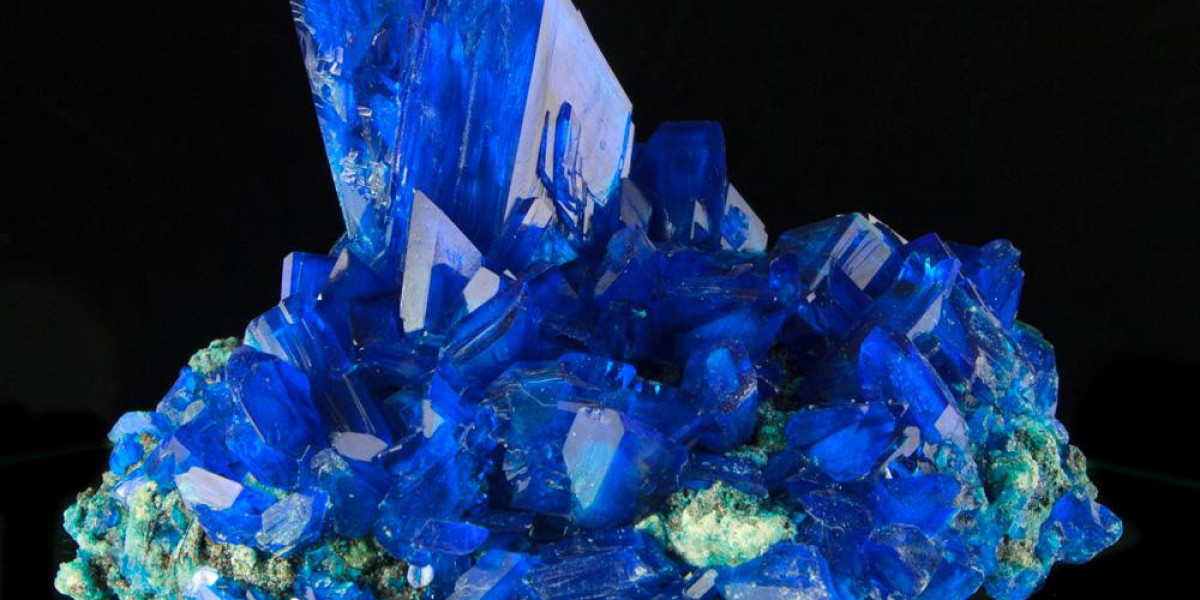Emeralds have captivated humanity for centuries with their vibrant green hues and exceptional rarity. These exquisite gemstones, part of the beryl mineral family, are prized for their beauty, value, and historical significance. In this article, we explore emerald specimens, their formation, mining locations, and factors affecting their quality and value.
Formation of Emerald Specimens
Emeralds form under specific geological conditions, requiring the presence of beryllium, chromium, and vanadium. These elements interact under immense heat and pressure, resulting in the crystal structures that create the iconic green gemstones. Unlike other gemstones, emeralds commonly contain inclusions and fractures, which gemologists refer to as "jardin" (French for garden). These natural characteristics differentiate authentic emerald specimens from synthetic or treated stones.
Top Emerald Mining Locations Worldwide
Colombia: The World's Leading Emerald Producer
Colombia is synonymous with the finest emerald specimens, accounting for nearly 70-90% of global production. Mines such as Muzo, Chivor, and Coscuez produce deep green, highly sought-after emeralds. Colombian emeralds are renowned for their rich color saturation, which remains unrivaled by stones from other regions.
Zambia: High-Quality Emeralds with a Distinctive Hue
Zambian emeralds are characterized by a bluish-green tone, making them unique in the gemstone market. These stones are often less included than their Colombian counterparts, increasing their desirability among collectors and jewelers. The Kagem Mine, one of the largest emerald mines in the world, is the primary source of Zambia’s emeralds.
Brazil: A Rising Competitor in the Emerald Market
Brazil has emerged as a key player in the emerald trade, with specimens from mines in Bahia, Goiás, and Minas Gerais showcasing a spectrum of green shades. Brazilian emeralds often have higher clarity and come in larger crystal formations, making them valuable in both jewelry and mineral specimen collections.
Other Notable Emerald-Producing Regions
Afghanistan: The Panjshir Valley produces high-quality emeralds with intense color and clarity.
Pakistan: Swat Valley emeralds are known for their bright, vivid green hue.
Russia: The Ural Mountains yield rare emeralds with a slightly different composition.
Characteristics That Determine Emerald Value
Color: The Most Important Factor
The richness of green color is the most defining characteristic of emeralds. The most valuable specimens display intense, vivid green hues with a high degree of transparency. Lighter emeralds, though still desirable, typically have a lower market value.
Clarity: Natural Inclusions vs. Flawless Stones
Unlike diamonds, inclusions in emeralds are common and often accepted. However, specimens with fewer visible inclusions command higher prices. Emeralds with extreme clarity are exceptionally rare and can fetch astronomical prices.
Cut: Enhancing Beauty and Brilliance
The emerald cut (a rectangular step-cut) is the most popular cut for emeralds, as it enhances their color while minimizing the visibility of inclusions. Other shapes such as oval, round, and pear cuts are also available, depending on the rough stone’s natural form.
Carat Weight: Size Matters
Larger emerald specimens are rarer and more valuable. However, due to their natural inclusions, a balance between size and clarity is essential when determining the worth of an emerald.
Emerald Treatments and Enhancements
Oil Treatment: A Common Practice
Most emeralds undergo oil treatment to fill surface-reaching fractures and improve their clarity. This process, using natural cedarwood oil, is widely accepted in the gem trade. However, highly treated emeralds are less valuable than untreated ones.
Resin and Polymer Fillings
Some emeralds receive advanced treatments involving resins and polymers. While these techniques enhance durability, they may reduce the stone's long-term value if not disclosed properly.
Emerald Specimens in Jewelry and Collecting
Emeralds in High-End Jewelry
Emeralds have adorned royalty and celebrities for centuries, appearing in iconic jewelry collections. High-end brands such as Cartier, Bulgari, and Tiffany & Co. incorporate emeralds into stunning pieces, from engagement rings to elaborate necklaces.
Collector’s Specimens: Unique and Uncut Crystals
Collectors seek raw, uncut emerald specimens for their natural beauty and rarity. These pieces often originate from famous mines and display extraordinary crystal structures.
How to Care for Emerald Specimens
Proper Cleaning and Storage
Emeralds require gentle care to maintain their luster. Harsh chemicals, ultrasonic cleaners, and excessive heat should be avoided. Instead, clean emeralds using mild soapy water and a soft cloth.
Avoiding Damage and Scratches
Despite their hardness of 7.5-8 on the Mohs scale, emeralds can still chip or break due to internal fractures. Storing them separately from harder gemstones like diamonds and sapphires prevents scratches and damage.
Investing in Emerald Specimens
Emeralds hold their value exceptionally well, making them a lucrative investment. Rarity, origin, and quality significantly impact their appreciation over time. When purchasing emeralds, always seek certification from reputable gemological laboratories such as the GIA (Gemological Institute of America) or IGI (International Gemological Institute).
Conclusion
Emerald specimens continue to be one of the most coveted gemstones in the world. Their unique formation, stunning green hues, and historical significance make them a favorite among collectors and jewelry lovers alike. Whether you are an investor, a collector, or simply an admirer of fine gemstones, understanding the intricacies of emeralds enhances your appreciation for these breathtaking natural wonders.








